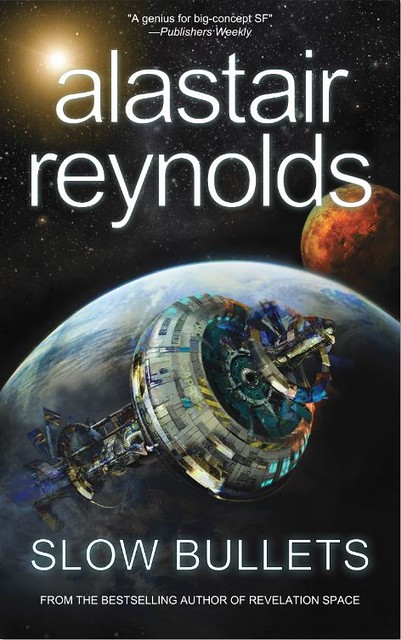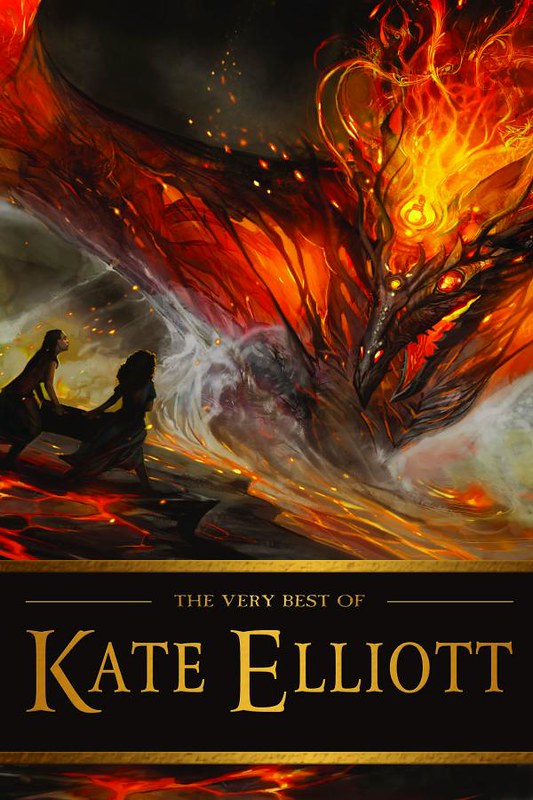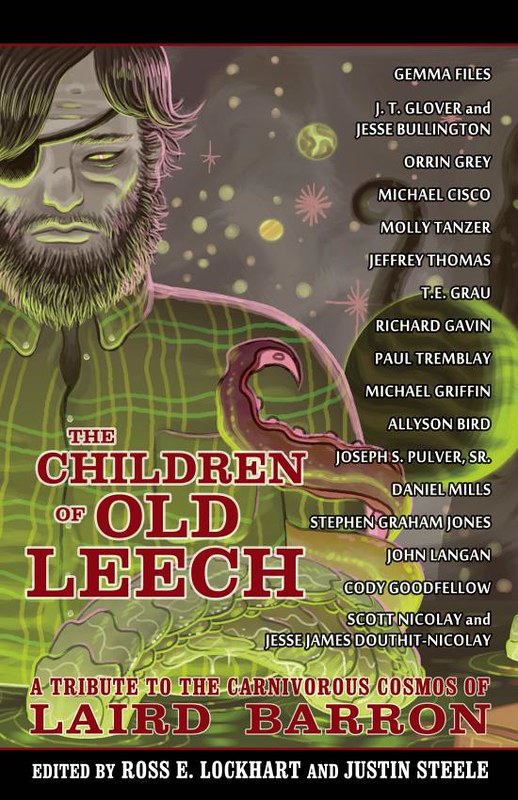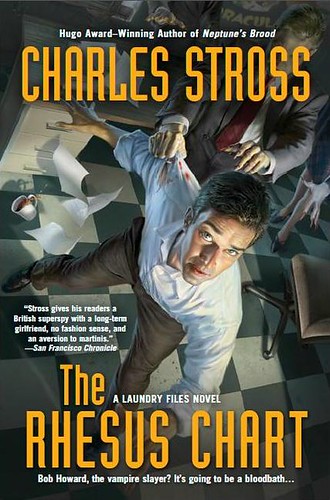
I'm using the "Editing in Process" tag so that this blog post tracks with my other posts in this category --
However, this project was actually completed last year. As I mentioned recently, I'm about three months or so behind on my blog posts[1]. But I digress....
So when I contacted
Alastair Reynolds last year about submitting a novella for Tachyon Publications, he responded with -- much to my delight: "I am working on a novella right now which does not yet have a home." It doesn't get any better than that because I obviously had the perfect home for that novella. That novella is entitled
Slow Bullets
and will be published in June.
For the past fifteen years, I have been a fan and advocate of Al Reynolds's short fiction. I first approached Al about a short story collection in April 2001, when I was acquiring and editing for Golden Gryphon Press. That short story collection didn't happen for many years (and when it did happen, I edited the collection for Night Shade Books[2]), but what I did receive from Al in 2002 was novella
Turquoise Days set in the Revelation Space universe.
TD was the first in a series of signed and numbered limited edition chapbooks from Golden Gryphon Press[3]. You can read the details on how the novella and short story collection came about in my blog post of July 16, 2009, entitled
"12 Stories Do Not a Collection Make."
But back to Slow Bullets: The first draft of the manuscript that Al sent me clocked in at around 40,125 words. To meet novella requirements, the story had to have a maximum word count of 40,000 words, so I asked Al to review the manuscript and cut a minimum of 250-300 words, to ensure the story was safely below the 40K word cap. Having worked with Al previously, I knew that he would accomplish this self-editing with the skill of a surgeon -- make that a brain surgeon. When I read the second draft of Slow Bullets, the story flowed so flawlessly that I couldn't tell where words had been cut or changed; I would have had to use the "compare two versions of a document" option in MS Word to determine the specific edits. I also suggested a couple tweaks to the content itself for clarity.
The revised draft was delivered to Tachyon Publications on August 13, 2014: the word count was 39,775 words.
After Tachyon formatted the final ms. to their own specifications, my next task was a full line edit and copy edit. I communicated directly with Al on any questions or issues that I encountered, and after I completed my markups (using MS Word change tracking), I emailed the file to the author for his review. Once both of us were in agreement with all the changes (and I don't recall there being that many anyhow), I mailed the final manuscript to Tachyon on September 8. Al and I still need to proof the layout pages, and these should be arriving by the end of this week. Slow Bullets is still on target for a June publication.
Back in June of last year, before the manuscript was finalized, I asked Al for a couple rough paragraphs describing the story's main character and plot, this is what the author sent me:
Scur is a soldier in a vast war between two human political groupings, [a war] that has encompassed hundreds of worlds and solar systems. Finally, a ceasefire is brokered ― and Scur begins to think about her life after the war, the world and the family she has left behind. But it is not be. On the brink of peace, Scur is captured by a sadistic war criminal and left for dead in the ruins of a bunker. Scur makes a desperate effort to save her life ― and wakes up, disorientated, aboard what appears to be a prisoner transport vessel.
But something has gone terribly wrong with the ship. The passengers ― combatants of both sides of the war, as well as civilians ― are waking up too soon. The ship is damaged, the crew powerless ― and half the occupants are about to try to kill the other half. For these are not just ordinary prisoners of war, being repatriated ― these are the worse of the worse ― and Scur is among them. But in truth, her problems have only just begun.
Scur finds herself at the crux of a struggle not just for her own survival, but to preserve civilization itself.
Now you are probably wondering what is the significance of the title -- just what is a "slow bullet"? A "slow bullet" is a bullet-like projectile that is injected into the body of every soldier, Central Worlds or Peripheral Systems (the two opposing sides in the war). The bullet contains a transponder and full history of the individual, including photographs. Here's a brief description:
Orvin smiled tightly. "Do you remember when they put the bullet into you?"
"I'm a soldier. Who doesn't remember?" [Scur speaking]
He gave a little nod of sympathy. "Yes, we used them on our side as well, or a virtually identical technology....Normally there's not much pain. The medics military use a topical anaesthetic to numb the entry area, and the slow bullet puts out another type of drug as it travels through your insides. It goes very slowly, too—or at least it's meant to. Hence the name, of course. And it avoids damaging any vital organs or circulatory structures as it progresses to its destination, deep enough inside your chest that it can’t be removed without complicated surgery."
Slow Bullets
from Tachyon Publications will be published in June 2014. You may preorder the book at this time on Amazon.com and hopefully from all other booksellers everywhere.
Further reading:
---------------
Notes and Footnotes:
In a recent blog post I used hyper-linked footnotes, i.e. you click on a footnote in the body of the blog post and you jump to the actual footnote at the end of the post. Sounds cool... Unfortunately, using hyper-linked footnotes in Blogger is a complete nightmare: When blogger saves the post, it adds data to all of the footnotes' hyperlinks. Initially, that data is a number link associated with the draft file, and a different number link when the blog post is actually published. So, just before the post is published, this added draft data must be removed otherwise the links won't work. And if you edit the published blog post for any reason, you have to remember to again remove this added data from all the footnote links before updating the post (otherwise the published number link will be there twice). I hope this all makes sense. Consequently I won't be using hyper-linked footnotes going forward -- unless someone knows of an easier, more user-friendly solution....
[1] Lots of reasons for my behindness: family and the holidays (Did I mention my first grandchild's birthday was in October?), new tech toys, a few hard-deadline projects (blog posts hopefully to follow), and even a bit of the "I don't feel like writing a blog post today" syndrome (which none of you have ever experienced, right?). But that's not to say I haven't been working, just not blogging.
[2]
Zima Blue and Other Stories
(Night Shade Books, 2006) has long been out of print, but the book can be purchased through Amazon sellers and other used booksellers, in either the NSB or Gollanz UK editions.
[3] The
Turquoise Days chapbook is also out of print; however, Ace Books published
TD alongside another Alastair Reynolds Revelation Space novella in a single volume:
Diamond Dogs, Turquoise Days
, which can again be purchased through Amazon sellers and other used booksellers.









